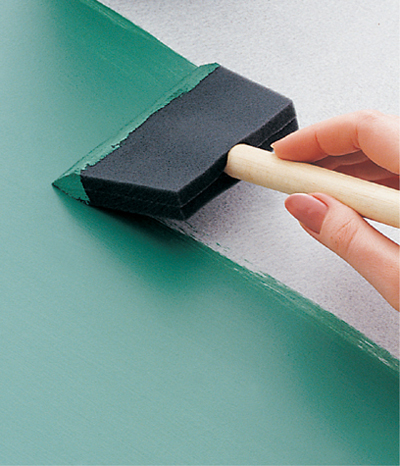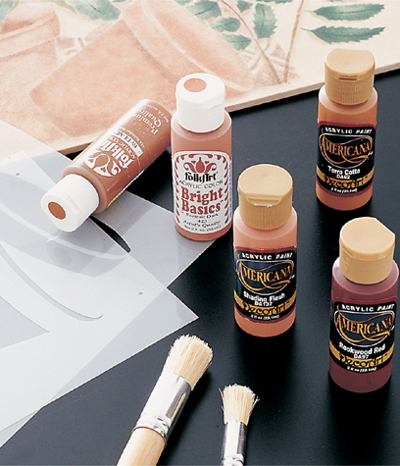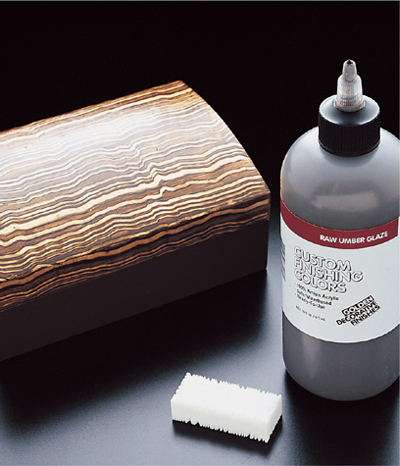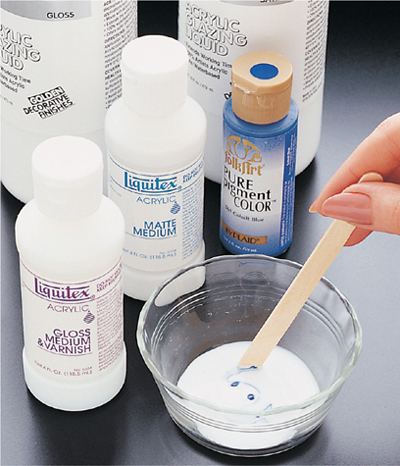 6. Advanced Painting Materials
6. Advanced Painting Materials 6. Advanced Painting Materials
6. Advanced Painting MaterialsLatex and acrylic paints can be used successfully for a wide range of faux finishes and techniques. Because they are water-based, they are easy to clean up with just soap and water, and they are also safer for the environment than oil-based paints.
Water-based paints dry quickly, which is not necessarily an advantage in decorative painting, especially for techniques that require some manipulation of the paint on the surface. To increase open time, or the length of time the paint can be manipulated, several paint additives have been developed. These include latex paint conditioner, such as Floetrol, and acrylic paint extender. These products are available at paint retailers and craft supply stores.
For some decorative painting techniques, it is preferable to use a paint glaze, which is usually thinner and more translucent than paint. There are some premixed acrylic paint glazes available in limited colors. These may be mixed to produce additional glaze colors. Untinted acrylic mediums in gloss, satin, or matte finishes also are available for mixing with acrylic or latex paint to make glazes. The glaze medium does not change the color of the paint; generally a small amount of paint is added to the glaze medium, just enough to give it the desired color. Latex or acrylic paint can also be mixed with water-based urethane or varnish for a very translucent glaze.

Low-luster latex enamel paint is used for the base coat under faux finishes. The slightly sheened surface gives the finish a base to cling to, while allowing manipulation tools to move easily on the surface.

Acrylic paints are available in a wide range of colors. They can be used alone for stenciling, or mixed with acrylic mediums to create glazes for decorative paint finishes.

Premixed acrylic paint glazes are available in a variety of colors for faux finishing. They are slightly translucent and contain additives for extended open time.

Acrylic mediums, or glaze mediums, can be mixed with acrylic or latex paint to create paint glazes with gloss, satin, or matte finishes.
Mix paint together (called “boxing”) in a large pail to eliminate slight color variations between cans. Stir the paint thoroughly with a wooden stick or power drill attachment. To keep paint from building up in the groove around the paint can lid, pound several small nail holes into the groove. This allows the paint to drip back into the can.